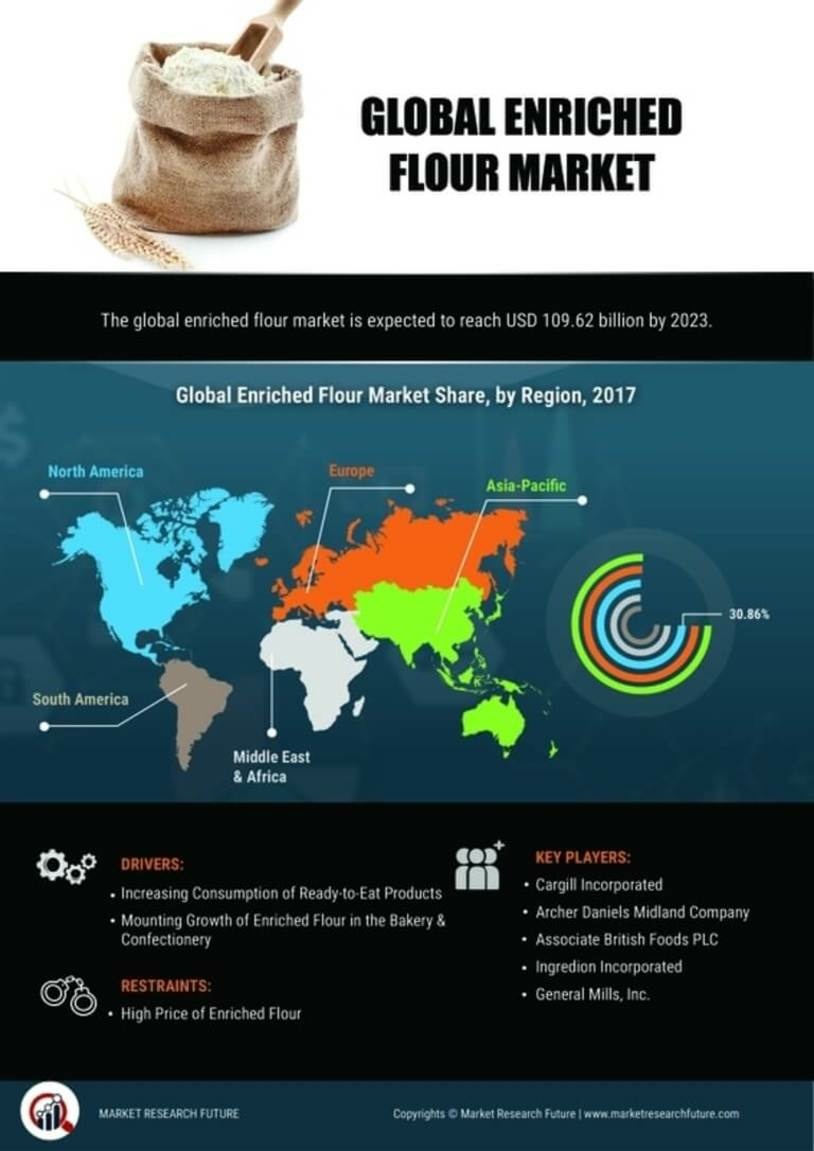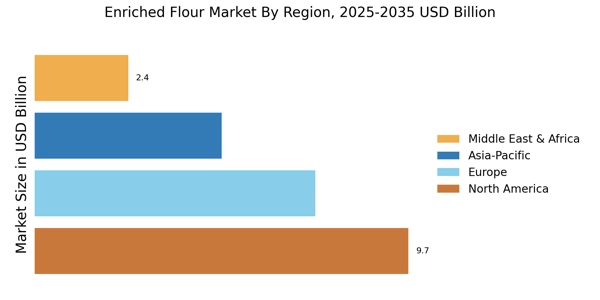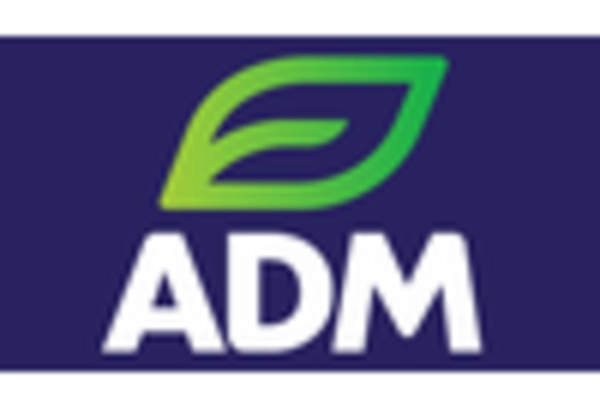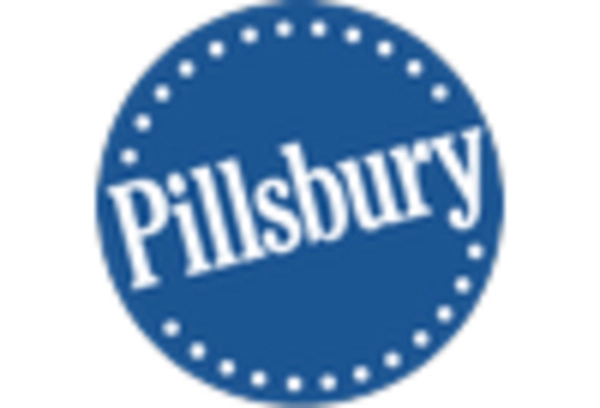Expansion of the Bakery Sector
The Enriched Flour Market is significantly influenced by the expansion of the bakery sector. With the increasing popularity of baked goods, including bread, pastries, and cakes, the demand for high-quality flour is on the rise. The bakery industry has seen a growth rate of around 10% annually, which directly impacts the consumption of enriched flour. Bakers are increasingly opting for enriched flour due to its superior baking properties and nutritional benefits. This trend is particularly pronounced in urban areas where convenience and quality are paramount. As the bakery sector continues to flourish, it is expected that the Enriched Flour Market will benefit from this upward trajectory, leading to enhanced product offerings and innovation.
Growing Popularity of Home Baking
The Enriched Flour Market is witnessing a rise in popularity of home baking, which has been fueled by a shift in consumer behavior. As more individuals engage in baking at home, there is an increased demand for high-quality ingredients, including enriched flour. This trend is particularly evident among millennials and younger generations who seek to create healthier versions of traditional baked goods. Market data suggests that sales of enriched flour have surged by approximately 20% in retail channels, reflecting this growing interest. As home baking continues to gain traction, it is likely that the Enriched Flour Market will see sustained growth, driven by the need for versatile and nutritious baking ingredients.
Innovations in Food Processing Technology
The Enriched Flour Market is benefiting from innovations in food processing technology. Advances in milling and fortification techniques have led to the production of enriched flour that retains more nutrients and has improved baking qualities. These technological advancements not only enhance the nutritional profile of flour but also improve its shelf life and usability in various applications. For instance, new milling processes can produce finer flour with better absorption properties, making it more appealing to both consumers and food manufacturers. As these innovations continue to evolve, they are expected to drive the growth of the Enriched Flour Market, offering new opportunities for product development and differentiation.
Rising Awareness of Food Safety Standards
The Enriched Flour Market is also shaped by the rising awareness of food safety standards among consumers and manufacturers alike. As food safety regulations become more stringent, there is a growing emphasis on the quality and safety of flour products. Enriched flour, which undergoes rigorous testing and fortification processes, is often perceived as a safer option compared to regular flour. This trend is supported by market data showing that consumers are willing to pay a premium for products that meet high safety standards. Consequently, manufacturers are increasingly investing in quality assurance measures, which is likely to enhance the reputation and demand for enriched flour in the market.
Increasing Demand for Nutritional Products
The Enriched Flour Market is experiencing a notable surge in demand for nutritional products. As consumers become more health-conscious, there is a growing preference for flour that is fortified with essential vitamins and minerals. This trend is particularly evident in regions where dietary deficiencies are prevalent. For instance, enriched flour is often fortified with iron, folic acid, and B vitamins, which are crucial for overall health. The market data indicates that the demand for enriched flour has increased by approximately 15% over the past year, driven by the rising awareness of the importance of nutrition in daily diets. This shift towards healthier eating habits is likely to continue, further propelling the growth of the Enriched Flour Market.


















Leave a Comment